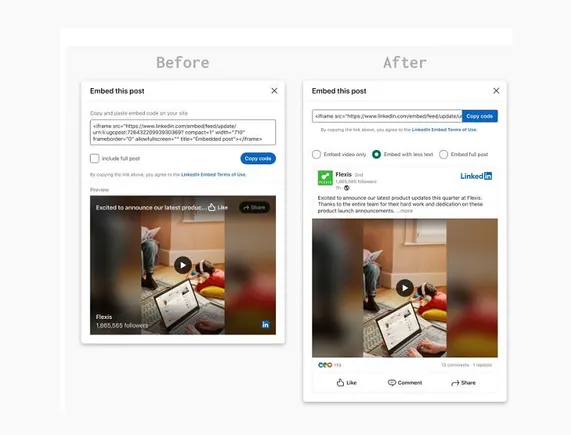Let’s start with the brutal reality—the U.S. economy is tough and about to get much tougher.
This puts CEOs, and their CFOs, in a difficult position. You’re forced to adapt to what you see coming, even though the evidence isn’t yet apparent to most. That’s your job, but unfortunately, it also often causes the people impacted by difficult financial decisions to see you as the enemy. Those impacted include anyone affected by job cuts, but can also extend to remaining employees who may see their budgets or even entire departments cut to keep the company operating profitably. While they might understand the moves logically, the emotional component is always there.
As CEO, your role is to support and empower your CFO to lead with clarity. That means prioritizing real-time data, fostering transparent communication, and aligning the organization around decisions that protect long-term viability—even when they’re unpopular in the short term.
Track Critical Metrics
I’ve been in the financial world for my entire career, starting at Prudential in their M&A division. I then ventured out on my own, launching Harren Equity Partners, which I’ve since built into a nearly $800 billion PE firm focused on distressed companies. Essentially, I restructure struggling companies into efficient and profitable assets. I know a thing or two about managing companies facing challenging circumstances.
The first thing every CFO needs to do now is to track every aspect of the company’s financial health in real-time. That helps management to make better-informed decisions more quickly, which can mean the difference between adapting and being blindsided. It can also provide key insights into tremendous opportunities before others see them.
For example, AR aging is an essential piece of internal information, but can also signal external opportunities. If your customers are paying later, your competitors’ customers are also likely paying later. If your competitors are in a weaker position, financially speaking, it could be an opportunity to acquire the smaller ones and, in the process, gain market share, talent and even proprietary technology. That assumes you’re in a position to do so without exposing your company to unnecessary financial risk.
Topline revenue is the first and most obvious metric to track, but it’s quite a bit downstream from the real metrics, so it’s smart to work backward to get data earlier in the equation. Think of all the data that eventually leads to topline revenue and start there.
It’s also important to closely track broader economic data, like interest rates, consumer and corporate debt levels, default rates, unemployment numbers and the inflation rate. These can all be early warning signs for future economic changes that could harm or benefit the business.
A less quantifiable measure to track is the quality of the relationships that impact your company’s financial health. Those could include your relationships with your team, vendors, suppliers, lenders and partners. You should work to nurture stronger relationships and look for signs of any problems that could adversely impact your company.
The idea is to identify and track as many relevant data points as possible, connect them to the evolving economy, and anticipate how they might require you to change how you do business. Having current information at your fingertips allows you to make the most critical and effective decisions possible at any given time, spot risks and opportunities, and plan short- and long-term.
Build Multiple Budgets
A business lives and dies by its budget. This is true during a good economy and is easily five times more critical during a weak economy.
But it’s not enough just to have a budget. It’s not even enough to have one you tailor to today’s economic conditions. Facing economic uncertainty, you need several different budgets that you can quickly pivot to as conditions evolve.
Consider these contingency plans like those used by the military when preparing for an operation. Military leaders develop a robust primary plan but also plan for when things don’t go according to the original plan, as is often the case. So, they’ll also develop a plan for what to do if they can’t accomplish the primary mission and what to do should other circumstances arise during the original plan’s execution. They’ll even plan what to do if all of their plans fail. A last resort, so to speak, is called “commander’s intent,” which is a directive for what absolutely must happen no matter what goes wrong.
Treat your budget in the same way. Have a budget for current circumstances, but also other budgets tailored to address circumstances like a massive increase in tariffs, an inability to access credit, a dramatic decrease in revenue or an increase in costs, new regulations or a significant workforce reduction. You should even plan for windfall opportunities because they tend to be more common during times like these.
For example, you may find that a competitor runs into financial problems, leading to an opportunity to market more aggressively to gain market share. If you’ve planned for this scenario, you can effectively capitalize on it, but if you haven’t, it could be a haphazard and financially dangerous move. The key to success is prior planning.
In addition, you need to live by your budget. One of my favorite and most successful CEOs said, “A budget is a promise, and you better keep it.” I love that line. Once you start missing budgets, not only do you have financial problems, but people also lose confidence in you. If that happens, you can’t give some sob story about how this or that thing happened. You need to turn it around and get things back on track before it’s too late.
Prioritize Relationships
One caveat is not to go overboard, keeping too tight to the budget when a key relationship is involved. Always place tremendous value on your relationships.
Whether it’s a vendor, supplier, partner, lender or anyone else, the conventional wisdom is to negotiate aggressively to maximize every penny. That is total nonsense. Business and, in the bigger picture, life are long-term games. The value of your relationships isn’t as apparent when things are going well, but it becomes abundantly clear when you’re in trouble and need a real partner. You only get those real partners by proving you are someone of your word and that you know what you’re doing.
People need to know that you will be there and consistently follow through on your word, no matter what. That will foster the confidence that your team, vendors, suppliers, lenders and partners need to have in you.
Keep the Foundation
The other mistake related to budgets I commonly see is that CFOs, out of an overabundance of caution and a desire not to be seen as careless, will cut critical infrastructure and operations.
Unfortunately, to circle the wagons and save as much capital as possible, they wind up hamstringing the company in various ways, making it much more challenging to generate the revenue the business desperately needs to continue operating at its current level, especially in a weak economy when customers are cutting back on their spending.
When a company no longer has the people to deliver its products or services effectively in a way that satisfies customers, it damages its brand irreparably, leading to severely reduced revenue. Marketing—the area many companies cut first and most aggressively—is another area where this can happen. The problem is that marketing cuts can also lead to lower revenue and, over time, less conservative companies gobbling up chunks of your market share. It can take years to recover if you ever recover at all.
It’s smart to make cuts where it makes sense, but it’s important not to go overboard and cut foundational aspects of the business that are essential to continued operations.



































































